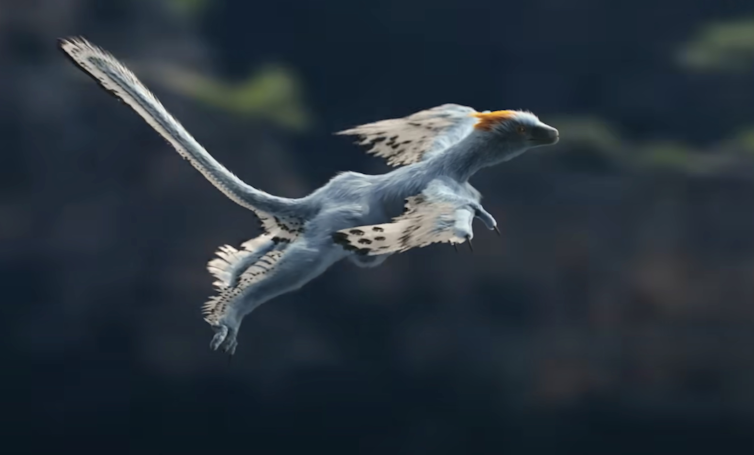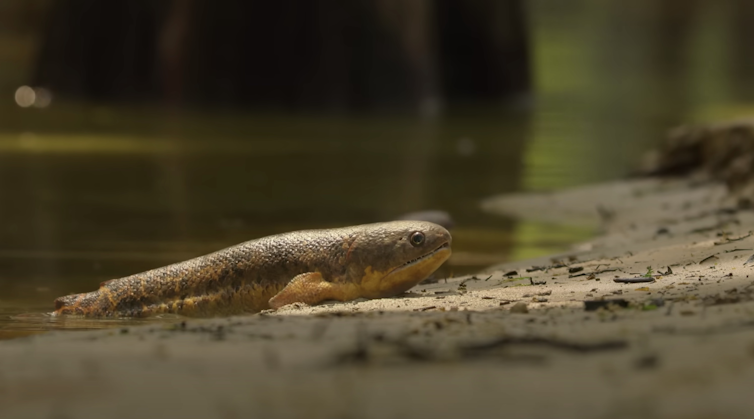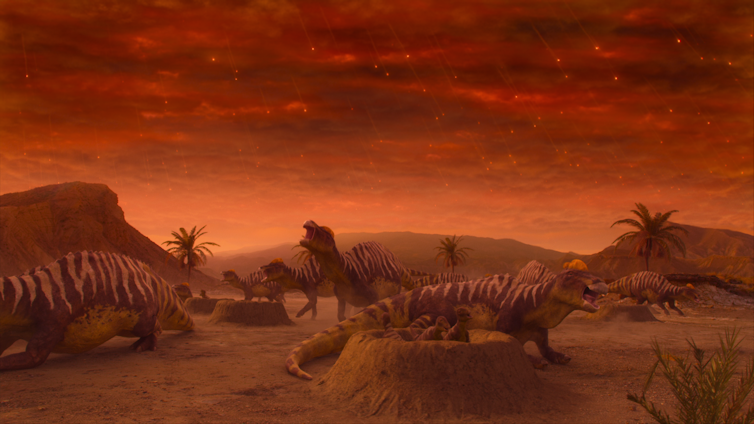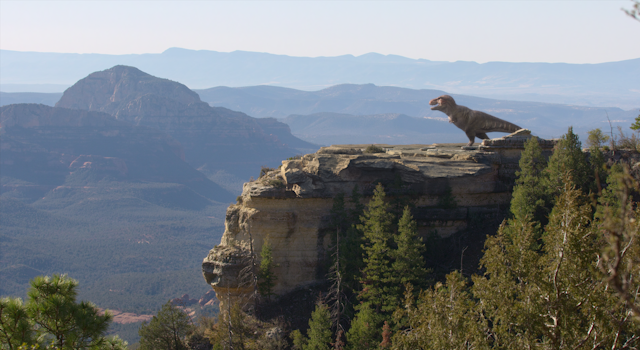Netflix’s beautifully realised historical biography of life certainly has ambition. Perhaps 4 billion species have existed in as many years of Earth’s history: an embarrassment of riches for eight 50-minute episodes.
To make sense of this, Life on Our Planet focuses on some remarkable turning points. The evolution of photosynthesis, multi-cellular animals, skeletons, legs and big brains are innovations that created opportunities for life to diversify and modify its environment in radically new ways.
Underlying all this, the inexorable movement of the continents repeatedly changed the stage. Sometimes, landmasses clustered together producing vast, harsh deserts, and sometimes they broke apart – as now – yielding a richer variety of environments that harbour vastly greater diversity. This interplay between biology and geology is the narrative thread throughout the series.
Life on Our Planet has some important messages about the nature of evolution and our own future. Here are the three we think most important.
1. Nothing is ever perfect
Every schoolkid knows that natural selection favours those most able to reproduce, and thereby shapes the genetics of all species. However, this honing process is far from perfect, and all species ultimately go extinct.

Not only does the physical environment change, but other species – predators, parasites and competitors – are always out to get you. Species are constantly evolving to catch up, but they never do. As the Red Queen in Lewis Carroll’s Through the Looking Glass observed: “It takes all the running you can do, to keep in the same place.”
But it’s worse than that. Not all evolution results from natural selection. Much occurs by random drift, so many traits probably have no advantage, but are merely coincidental to those that do. Random effects may even be vital for some modes of speciation.

The palaeobiologist Stephen Jay Gould warned against interpreting all biological structures as though perfectly refined by evolution for some particular function. But Life on Our Planet does adopt this flawed, adaptationist world view at times, usually in pursuit of a dramatic narrative.
2. The past is the key to the future
Follow your family tree back about 12,000 generations and you are somewhere near the origin of our species. Go back perhaps 300,000 generations and you will find your many-times great grandmother shared with a chimpanzee. Around 80 million years ago, your tree merges with that of the family dog.
Every species today therefore carries an enormous weight of evolutionary baggage. Amazingly, our embryos imperfectly “run through” some of these ancient evolutionary precursors. Early in fetal development, we temporarily bear the gill slits and post-anal tail of our fish forbears.

Our genes and bodies contain the imprints of the past, and these often limit the ways in which we can evolve in the future. Some things have simply “got stuck” for no particularly good adaptive reason that we can fathom.
Nearly all mammals – from humans to giraffes – have just seven vertebrae in their neck, no matter how long or impressive. Conversely, our distant cousins the birds (about 320 million years removed) evolved different numbers of neck bones – 10 in parrots, 26 in swans – in response to selection.
As development becomes more complicated, there are more interdependent parts (gene products and structures), and these tend to serve more than one function. With time, it becomes increasingly difficult to change one thing for the better without detrimental effects elsewhere. Much like Jenga, it’s hard to build a taller tower by taking blocks from lower down.
3. Nothing lasts forever
The story of Life on Our Planet is punctuated by five mass extinctions, each triggered by different events. Animals and plants today are just the uppermost tips of vast, otherwise extinct “icebergs” of biodiversity, 99% of which lie submerged in deep time and are known only from fossils.
Many once-dominant branches of the tree of life – like the armoured trilobites and the flying pterosaurs – have no descendants. Others, like the egg-laying mammals (monotremes) and the largetooth sawfish, are just hanging on by a thread.

The asteroid impact shown in episode six that exterminated most dinosaurs (and 75% of other species) is the best known and most recent mass extinction, but wasn’t the biggest. Episode two showcases an unprecedented and unsustainable planktonic bloom in the late Devonian (360 million years ago). As the plankton died, bacteria harvested their remains, turning the oceans anoxic (depleted in oxygen). This catalysed the demise of ammonites, sharks and armoured fishes such as the colossal Dunkleosteus, and the ocean became a sickly green graveyard.
Worse still, 252 million years ago (as shown in episode three), vast upwellings of magma burned through the Earth’s crust over millions of square miles of Siberia. The ensuing “great dying” saw the loss of 96% of the planet’s marine species. The volcanic outgassing of greenhouse CO₂ raised Earth’s temperature by 10 degrees, while SO₂ caused acid rain that washed away entire ecosystems.

Despite different ultimate causes, the real damage in every mass extinction results from environmental changes that are too fast for organisms to adapt to. The subtext throughout the series is a warning: humans are driving swings in Earth’s climate that will catastrophically deplete the biodiversity on which we all depend.
Should I watch it?
We hope that you do. Life on Our Planet highlights the richness of Earth’s biodiversity, as well as the achingly long geological timescales it needed to evolve. It’s also hugely entertaining, with all the prehistoric stand-offs you could wish for, irresistibly narrated by the Christmas-pudding-rich tones of Morgan Freeman. But Life on Our Planet really excels when explaining the dynamic relationship between Earth and its organisms – showing how the two are inextricably intertwined.

Looking for something good? Cut through the noise with a carefully curated selection of the latest releases, live events and exhibitions, straight to your inbox every fortnight, on Fridays. Sign up here.

